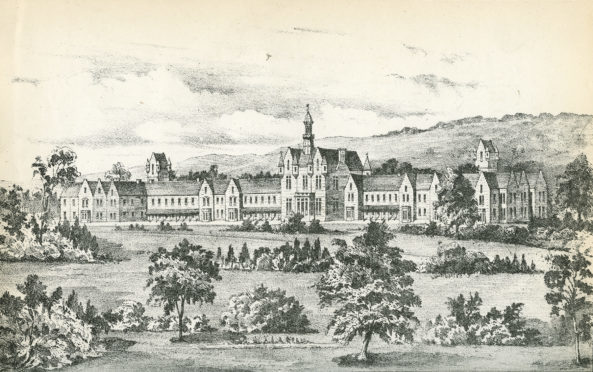The lives of a group of Dundee patients certified as insane more than a century ago will be examined in a new exhibition tackling today’s mental health issues.
The University of St Andrews exhibition Face to Face: Stories from the Asylum, will assess the unusual diagnoses’ of nine people admitted to Dundee Royal Lunatic Asylum at the turn of the 20th century.
Hosted by Dundee University, it forms part of a project by the University of St Andrews called “Promoting mental health through the lessons of history”.
Through the study, researchers are exploring how mental disorders have been understood and treated over the past 500 years. They hope knowledge of these ideas can help shape awareness of mental ill-health and its modern treatment.
PhD student Morag Allan Campbell, who researched the patients’ stories and designed the exhibition, said the purpose was to understand more about the lives of those deemed insane at the time.
She said: “The exhibition is not about the rights and wrongs of institutional care, or about the conditions in the asylum.
“Neither is it about trying to judge how much psychiatry may have improved since then – it is about making connections between the stories of these patients and our own thoughts and experiences today.
“Our understanding of the Victorian lunatic asylum, and our perception of the history of psychiatry, is often fed by myth and fiction.
“The 19th century saw a massive rise in the building of asylums, as institutional care became the dominant means of caring for the insane, but we know little of the lives of those who entered them as patients and how they experienced mental illness.
“Times may have changed, but the ways in which these patients were vulnerable to life’s stresses, strains and hardships were not so very different.”
The asylum officially opened in April 1820, on a site to the north of the town, before moving further west in 1882 to a new site at Westgreen Farm, near the parish of Liff and Benvie.
The NHS took over control in 1948, and the buildings at Liff finally closed in 2001 following the opening of a psychiatric unit at Ninewells Hospital.
Dundee University’s Archive Services houses the NHS Tayside archive and the Dundee asylum records with those behind the exhibition using information and photographs from the patients’ case notes.
They will be used to examine the circumstances which led to their committal to the asylum, the dilemmas faced by their families, and the nature of their mental illness.
The project’s lead, professor Rab Houston of St Andrews’ School of History, added: “We hope the exhibition will prompt viewers to think about the continuities between the experiences of people in the past and in the present day, as well as the very different material environment in which they lived.
“It is about Dundee people, but it speaks for those with mental disorders anywhere in the world.”
The free exhibition will open this Friday March 23 at the Tower Foyer Gallery on Perth Road, Dundee from Friday March 23 at 9.30am.
It will run Monday to Saturday until June 9. More information can be found at





